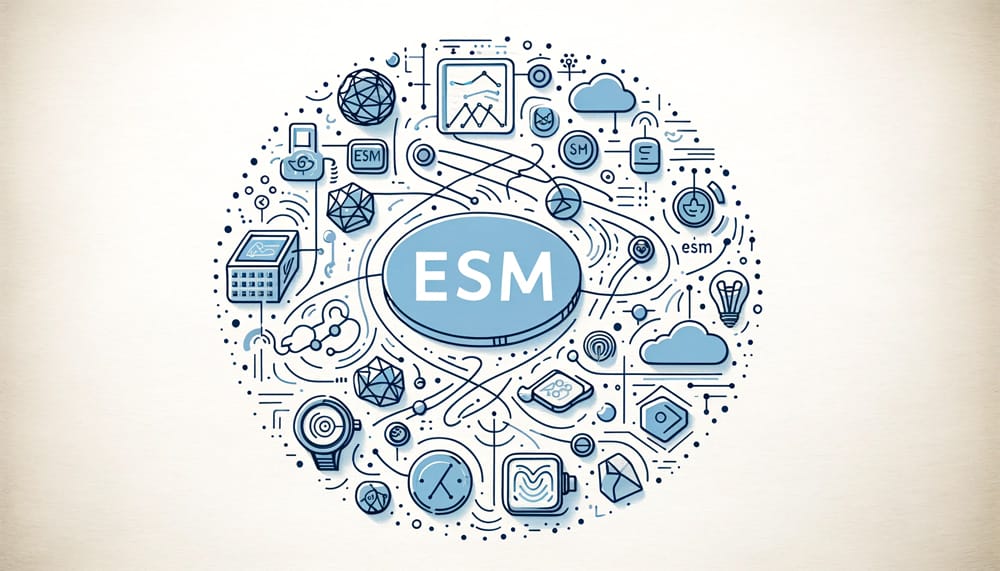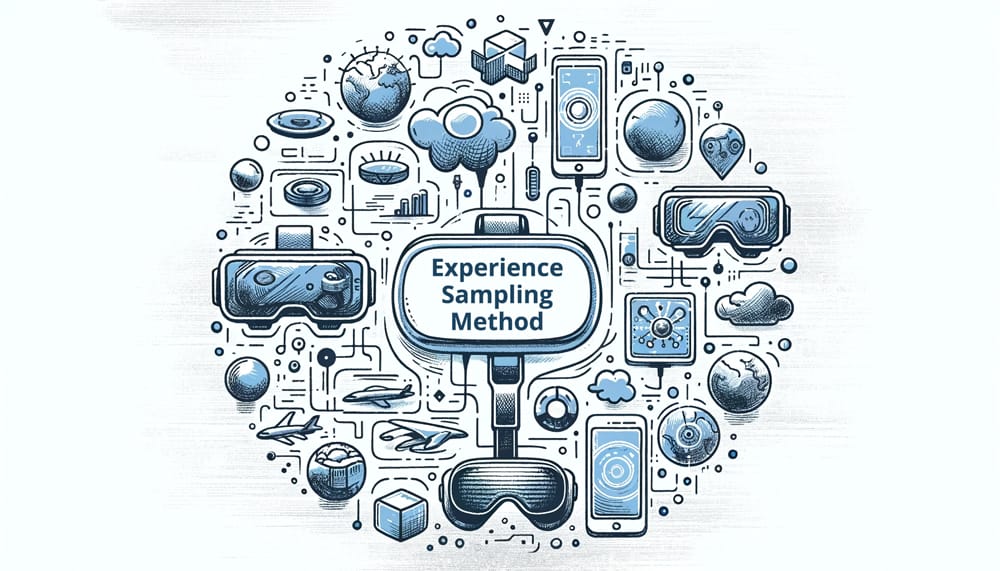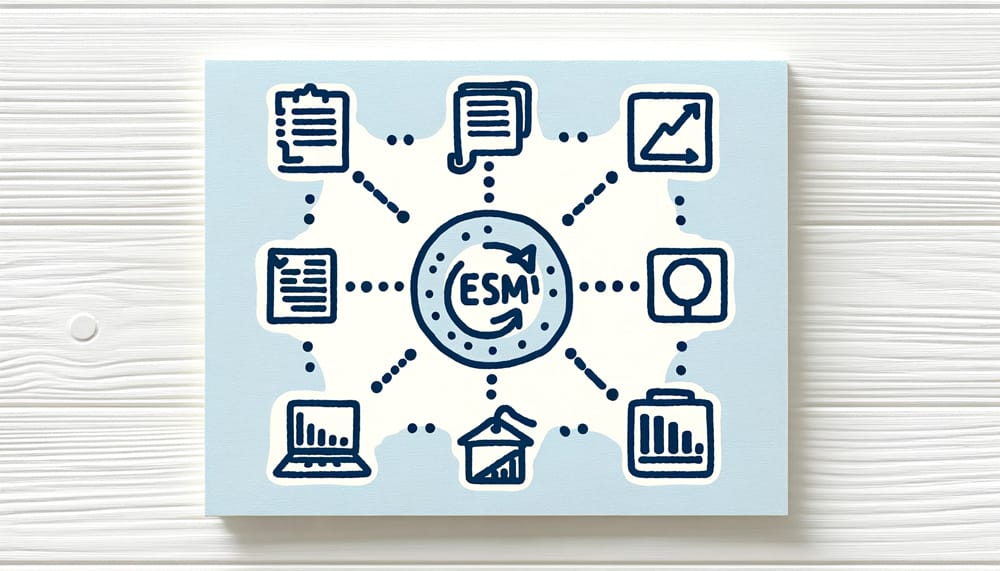Introduction to Integrating ESM
In the landscape of contemporary research, the Experience Sampling Method (ESM) has emerged as a dynamic tool for gathering in-depth, real-time data. When combined with other research methodologies, ESM can significantly enrich a study, offering a more comprehensive understanding of the subject matter. Additionally, for those new to ESM or seeking a foundational understanding, Introduction to Experience Sampling Method (ESM) is an essential read.
Overview of the Benefits of Combining ESM with Other Research Methods
Integrating ESM with other research methods brings forth several key benefits:
-
- Enhanced Data Richness: ESM provides nuanced insights into participants’ experiences in their natural environments. When paired with methods like interviews or surveys, this data richness is further augmented, capturing a fuller picture of the research subject.
-
- Diverse Perspectives: Combining ESM with methods such as observational studies or experimental research allows for the collection of data from different angles, providing a more holistic understanding.
-
- Validation and Corroboration: Using multiple methods enables researchers to validate findings across different data sources. This cross-validation strengthens the reliability of the research conclusions.
The Value of Multi-Method Approaches in Enhancing Research Depth
A multi-method approach, incorporating ESM, offers substantial value in deepening research depth:
-
- Comprehensive Analysis: Different methods can illuminate various aspects of a research question. For instance, ESM can capture subjective experiences, while observational studies provide an objective viewpoint.
-
- Flexibility in Research Design: Multi-method research designs are adaptable to diverse research questions and contexts. Explore the effective integration of the Experience Sampling Method (ESM) with other research methodologies in our comprehensive guide, Combining Experience Sampling Method (ESM) with Other Research Methods: A How-To Guide. This guide provides practical advice and strategies for researchers looking to enhance their studies by combining ESM with qualitative and quantitative approaches.
-
- Addressing Research Limitations: Each method has its limitations. By combining ESM with other methodologies, researchers can mitigate these limitations, leading to more robust research designs.
“In the symphony of research methodologies, ESM plays a harmonious tune that, when combined with other methods, creates a richer, more comprehensive understanding of the research subject.”
The integration of ESM with other research methods represents a paradigm shift towards more dynamic, comprehensive, and nuanced research approaches. This multi-faceted approach not only enhances the depth of research but also broadens the scope of insights that can be derived, paving the way for groundbreaking discoveries and applications.
ESM and Interviews

Combining Experience Sampling Method (ESM) with interviews creates a powerful research tool, synergizing real-time, contextual data with in-depth, personal narratives. This blend of methodologies enriches the research findings by providing both quantitative and qualitative insights.
Synergizing ESM Data with Qualitative Insights from Interviews
-
- Complementing Data with Personal Narratives: ESM captures data on participants’ experiences as they occur, but interviews allow for deeper exploration of these experiences. Learn the art of selecting the right participants for Experience Sampling Method (ESM) studies in our informative guide, How to Select Participants for an Experience Sampling Method (ESM) Study: Sampling Techniques. This guide delves into various sampling techniques, providing insights and strategies to help researchers ensure effective participant engagement in ESM research.
-
- Enhanced Understanding of Context: Interviews can provide context to the data collected through ESM, helping researchers understand the ‘why’ behind the ‘what’.
Strategies for Integrating Findings from Both Methods
-
- Sequential Integration: Use ESM data to inform interview questions. For example, identify patterns or notable responses in ESM data and explore these further in interviews. This approach, as discussed in Integrating ESM with Qualitative Research, can lead to more targeted and meaningful interview questions.
-
- Concurrent Analysis: Analyze ESM and interview data concurrently to draw parallels and contrasts between the two data sets. This can reveal congruences or discrepancies in self-reported experiences versus reflective narratives. Concurrent analysis is beneficial in studies where student experiences and reflections can provide insights into learning processes.
-
- Triangulation for Validation: Use triangulation to validate findings. If both ESM data and interview responses point to similar conclusions, this strengthens the validity of the research findings. Triangulation also helps in addressing potential biases inherent in either method alone, as noted in Challenges and Solutions in ESM Research.
“In the confluence of ESM and interviews, we find a rich tapestry of data – one that weaves together the immediacy of experience with the depth of personal narrative.”
Integrating ESM with interviews offers researchers a comprehensive toolkit for exploring complex research questions. This combination allows for a more nuanced understanding of participants’ experiences, enhancing the overall richness and validity of the research findings.
Combining ESM with Surveys

Merging Experience Sampling Method (ESM) with traditional surveys offers a multifaceted approach to research, allowing for the collection of both in-depth, contextual data and broader, generalizable insights. This combination can enhance the comprehensiveness and depth of a study’s findings.
Utilizing Surveys to Complement ESM Data
-
- Broadening Contextual Understanding: Surveys can provide a broader context to the specific, momentary insights gathered through ESM. For more detailed guidance on effective ESM prompt design, including balancing clarity with engagement, resources such as Designing an ESM Study: Key Considerations and Steps can be extremely helpful.
-
- Generalizability of Findings: While ESM offers deep insights into individual experiences, surveys can help generalize these findings to a wider population.
Designing Surveys That Align with ESM Findings
-
- Informed Questionnaire Development: Develop survey questions based on preliminary findings from ESM data. This approach ensures that surveys are directly relevant to the themes and patterns emerging from ESM. Tailoring surveys in this way, as suggested in Designing an ESM Study: Key Considerations, leads to more targeted and insightful responses.
-
- Temporal Alignment: Time the distribution of surveys to coincide with significant phases or findings of the ESM study. For example, deploying a survey after a notable trend or event in ESM data can provide immediate, reflective insights from participants. This timing strategy ensures that survey responses are contextually relevant and can be effectively compared with ESM data.
-
- Integrating Data for Comprehensive Analysis: Integrate and analyze data from both ESM and surveys to draw comprehensive conclusions. This might involve looking for correlations or discrepancies between the two data sets. Techniques for effective data integration and analysis are discussed in Analyzing ESM Data: A Guide.
“Combining ESM with surveys is like viewing a landscape through both a microscope and a telescope: one provides detailed close-ups, the other a wide-angle view, together offering a complete picture.”
By effectively combining ESM with surveys, researchers can leverage the strengths of both methods to gain a richer, more nuanced understanding of their research topic. This dual approach not only enhances the depth of the study but also broadens its applicability and relevance.
ESM and Observational Studies

The integration of Experience Sampling Method (ESM) with observational studies provides a comprehensive approach to research, combining the self-reported data of ESM with the objective insights of observational methods. This blend offers a unique perspective, enriching the understanding of behaviors and experiences.
Integrating Observational Data with ESM Responses
-
- Complementary Data Collection: Observational studies provide an external viewpoint, offering objective data that can complement the subjective experiences captured through ESM. For example, while ESM might capture employees’ self-reported stress levels, observational studies can monitor actual workplace behaviors and interactions. This combination allows researchers to compare and contrast self-reported perceptions with observable behaviors, enhancing the validity of the findings.
-
- Real-Time Correlation: Pairing ESM with observational data in real-time can reveal immediate correlations between observed behaviors and reported experiences. This is especially relevant where researchers can observe the external manifestations of internal states. Synchronizing ESM prompts with observational schedules ensures that the data from both methods are contextually aligned. For a deeper understanding of prompt timing strategies and technology applications in ESM, Technological Innovations in ESM Data Collection provides comprehensive insights.
Methods to Ensure Coherent and Complementary Data
-
- Integrated Research Design: Design the study to ensure that ESM and observational methods are intrinsically linked. This involves planning the timing and nature of both ESM prompts and observational sessions to align with each other. Integrating research design, as outlined in Designing an ESM Study: Key Considerations, ensures that both methods target the same research questions and objectives.
-
- Data Triangulation: Use data triangulation to validate findings across both methods. Triangulation involves comparing data from ESM and observations to identify common themes and discrepancies. This approach, as discussed in Integrating ESM with Qualitative Research, enhances the reliability and depth of the research conclusions.
-
- Analytical Strategies for Merging Data: Develop strategies for merging and analyzing data from ESM and observational studies. This might include qualitative analysis of observational data alongside quantitative analysis of ESM responses. Effective data merging techniques are crucial, as seen in Analyzing ESM Data: A Guide.
“Integrating ESM with observational studies offers a lens through which the subjective and objective dimensions of human experience can be viewed in tandem, providing a richer, more holistic understanding.”
By combining ESM with observational methods, researchers can capture a more complete picture of the phenomena under study. This integrated approach not only enriches the data collected but also provides a more nuanced understanding of the research topic, leveraging the strengths of both self-reported and observed data.
ESM in Experimental Research

Incorporating the Experience Sampling Method (ESM) into experimental research offers a unique opportunity to observe how experimental conditions impact participants in real-world settings. This combination can enhance the ecological validity of experimental findings and provide nuanced insights into the effects of experimental manipulations over time.
How ESM Can Be Used Alongside Experimental Methods
-
- Real-Time Monitoring of Experimental Effects: ESM allows for the observation of participants’ immediate reactions and experiences in response to experimental conditions. For instance, in a study exploring stress interventions, ESM can track changes in participants’ stress levels throughout the day in real-time.
-
- Enhancing Experimental Design: ESM can be integrated into the experimental design to provide a continuous stream of data, complementing traditional pre- and post-experimental measures.
Addressing Challenges in Combining These Methodologies
-
- Synchronizing ESM with Experimental Phases: Timing is crucial when integrating ESM with experimental methods. Aligning ESM prompts with specific phases of the experiment ensures that the data collected is relevant and informative. Careful planning, as outlined in Designing an ESM Study: Key Considerations, is necessary to synchronize these aspects effectively.
-
- Managing Increased Participant Burden: Combining ESM with experimental procedures can increase the overall burden on participants. It’s essential to balance the need for comprehensive data collection with participants’ capacity to engage without fatigue. Strategies to mitigate this challenge, such as optimizing the frequency of ESM prompts, are discussed in Improving Compliance in ESM Data Collection.
-
- Data Integration and Analysis: Integrating and analyzing data from both ESM and experimental components pose a challenge due to the differing nature of the data. Employing advanced data analysis techniques, as seen in Analyzing ESM Data: A Guide, can facilitate the coherent synthesis of these data sources. Employing multivariate analysis can also be effective in understanding the interactions between experimental variables and ESM data.
“In the fusion of ESM with experimental research, the dynamic interplay of controlled conditions and real-world experiences offers a profound view into the complexities of human behavior and experiences.”
The integration of ESM into experimental research methodologies presents a powerful approach to understanding the immediate and longitudinal impacts of experimental manipulations in real-life contexts. By addressing the challenges in combining these methods, researchers can harness the full potential of ESM to enrich experimental research outcomes. Navigate ESM’s complexities in longitudinal studies with this essential read.
Data Integration and Analysis in Multi-Method Research

Incorporating Experience Sampling Method (ESM) into multi-method research involves the challenge of effectively merging and analyzing data from various sources. The integration of disparate data sets is key to ensuring the consistency and validity of the research findings.
Techniques for Merging and Analyzing Data from Multiple Sources
-
- Data Harmonization: Harmonization involves standardizing data across different sources to allow for effective comparison and integration. This includes aligning data formats, scales, and measurement intervals.
-
- Advanced Statistical Techniques: Utilize multivariate statistical methods to analyze combined datasets. Techniques such as structural equation modeling or mixed-methods analysis can reveal complex relationships between variables collected through different methods. The application of these techniques, as outlined in Analyzing ESM Data: A Guide, is crucial for extracting meaningful insights from integrated data.
-
- Longitudinal Data Analysis: For research combining ESM with longitudinal methods, apply time-series analysis or growth curve modeling to understand changes over time. Delve into the nuances of using the Experience Sampling Method (ESM) in longitudinal studies with our article, “Using Experience Sampling Method (ESM) in Longitudinal Studies: Challenges and Solutions”. This guide addresses common challenges and offers effective solutions for researchers.
Ensuring Consistency and Validity in Multi-Method Research
-
- Cross-Method Validation: Validate findings across different methods to ensure consistency. For instance, corroborating interview insights with ESM data can strengthen the validity of the conclusions. Cross-method validation, a key aspect of robust research design, is highlighted in Challenges and Solutions in ESM Research.
-
- Consistent Data Quality Management: Maintain high standards of data quality across all methods. This includes regular data quality checks, handling missing data appropriately, and ensuring data accuracy. Effective data management practices are essential, as discussed in ESM Data Visualization Techniques.
-
- Ethical Considerations: Uphold ethical standards in data integration, especially when dealing with sensitive information. Ensure participant confidentiality and data security, as emphasized in Ethical Considerations in ESM Research.
“Merging and analyzing data from multiple sources in ESM research is like weaving together different threads to create a rich tapestry of insights, each method contributing its unique hue and texture.”
By employing these techniques for data integration and analysis, researchers can maximize the value of multi-method research, ensuring that the combined insights from ESM and other methodologies are both coherent and comprehensive. This integrative approach not only enhances the depth of research but also contributes to its overall rigor and validity.
Case Studies of Multi-Method ESM Research

Exploring real-world examples where the Experience Sampling Method (ESM) has been successfully integrated with other research methods offers valuable insights into the practical application of multi-method approaches. These case studies highlight key lessons and best practices, demonstrating the efficacy of combining ESM with diverse methodologies.
Real-World Examples of Successful Integration of ESM with Other Methods
-
- ESM and Interviews in Mental Health Research: A study in the field of mental health combined ESM with in-depth interviews to understand the daily experiences and coping mechanisms of individuals with anxiety disorders. The ESM data provided real-time accounts of anxiety episodes, which were further explored and contextualized through interviews. Explore the effective integration of the Experience Sampling Method (ESM) with other research methodologies in our comprehensive guide, Combining Experience Sampling Method (ESM) with Other Research Methods: A How-To Guide. This guide provides practical advice and strategies for researchers looking to enhance their studies by combining ESM with qualitative and quantitative approaches.
-
- ESM and Observational Studies in Educational Settings: In an educational research project, ESM was used alongside classroom observations to study student engagement. While ESM captured students’ self-reported levels of engagement, observational data provided an objective measure of classroom interactions and teaching methods.
Lessons Learned and Best Practices from These Studies
-
- Comprehensive Data Collection: Integrating ESM with other methods provides a more comprehensive dataset, capturing both the subjective experiences and observable behaviors of participants. This approach, underlined in Integrating ESM with Qualitative Research, ensures a well-rounded understanding of the research topic.
-
- Cross-Methodological Validation: The studies demonstrated the importance of validating findings across methods. This cross-validation enhances the credibility of the research, as each method corroborates the other. As outlined in Challenges and Solutions in ESM Research, addressing methodological challenges enhances the robustness of the findings.
-
- Ethical Considerations in Multi-Method Research: Ethical considerations, particularly regarding participant consent and data privacy, were paramount in these studies. Ensuring ethical compliance across all methods is crucial, as emphasized in Ethical Considerations in ESM Research.
“The integration of ESM with other research methods illuminates the multi-dimensional nature of human experiences, offering richer insights than could be achieved by any single method alone.”
These case studies exemplify the power of multi-method research in providing a deeper, more nuanced understanding of complex phenomena. They serve as exemplars for future research, showcasing the effectiveness and potential of combining ESM with other methodologies.
Conclusion: Maximizing Research Outcomes
The integration of the Experience Sampling Method (ESM) with other research methodologies represents a paradigm shift in how we approach scientific inquiries. This multi-method approach not only broadens the scope of research but also deepens the level of understanding, providing a more comprehensive view of the phenomena under study.
Summarizing the Advantages of a Multi-Method Approach
-
- Richer Data and Enhanced Insights: Combining ESM with methods like interviews, surveys, and observational studies leads to the collection of richer data, offering both breadth and depth in insights.
-
- Validation and Reliability: Cross-method validation, where findings from one method are corroborated by another, enhances the reliability and credibility of the research.
-
- Flexibility and Adaptability: A multi-method approach offers the flexibility to adapt research designs to suit specific research questions, making it applicable across various fields.
Best Practices and Tips for Effectively Combining ESM with Other Research Methods
- Strategic Planning: Carefully plan the integration of methods to ensure they complement each other and align with the research objectives.
- Ethical Considerations: Uphold ethical standards across all methodologies, particularly in maintaining participant confidentiality and data security, as discussed in Ethical Considerations in ESM Research.
- Data Integration Techniques: Utilize appropriate techniques for data integration and analysis, ensuring consistency and validity in findings, as outlined in Analyzing ESM Data: A Guide.
“In the realm of scientific research, the combination of ESM with other methods is akin to assembling a mosaic; each piece, unique in its methodological approach, comes together to form a comprehensive and vivid picture of the research landscape.”
By embracing these best practices, researchers can effectively harness the power of a multi-method approach, maximizing the potential of their studies and contributing valuable, nuanced insights to their respective fields.
You Might Also Be Interested:
Delve into our comprehensive ESM Article Collection for insightful perspectives on Experience Sampling Method (ESM).
See our article Best Tools for Experience Sampling Method in 2024 to discover the top tools in the field.
Learn how the advanced features of Fibion Insight can aid your ESM research.
Planning an ESM study? For a chat with our ESM expert, book a session with Dr. Miriam Cabrita.
Frequently asked questions about this topic
What are the benefits of combining ESM with other research methods?
+
Combining ESM with other methods enhances data richness, provides diverse perspectives, and enables validation and corroboration across different data sources, leading to more comprehensive research findings.
How does integrating ESM with interviews enrich research findings?
+
Integrating ESM with interviews combines real-time, contextual data with in-depth personal narratives, providing both quantitative and qualitative insights for a fuller understanding of research subjects.
What role does ESM play when combined with surveys in research?
+
ESM, when combined with surveys, provides in-depth, contextual data while surveys contribute to broader, generalizable insights. This combination broadens the contextual understanding and enhances the generalizability of findings.
How can ESM and observational studies be effectively combined?
+
Combining ESM with observational studies offers complementary data collection, where ESM provides subjective experiences and observational methods offer objective data, enhancing the validity of research findings.
In what ways does ESM enhance experimental research?
+
ESM enhances experimental research by providing real-time monitoring of experimental effects and enhancing experimental design through continuous data collection, complementing traditional experimental methods.
What are the key considerations for data integration in multi-method ESM research?
+
Key considerations include data harmonization to standardize formats, employing advanced statistical techniques for analysis, ensuring consistency and validity, and using cross-method validation to strengthen research credibility.











 Delve into our comprehensive
Delve into our comprehensive  See our article
See our article  Learn how the advanced features of
Learn how the advanced features of  Planning an ESM study? For a chat with our ESM expert,
Planning an ESM study? For a chat with our ESM expert, 




